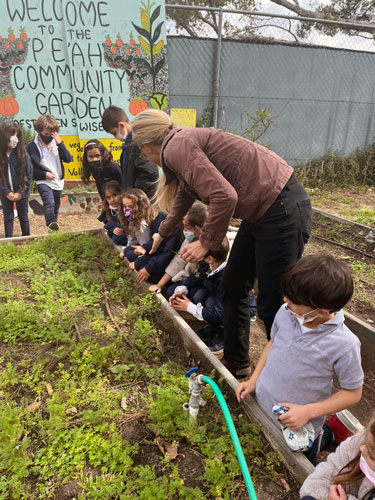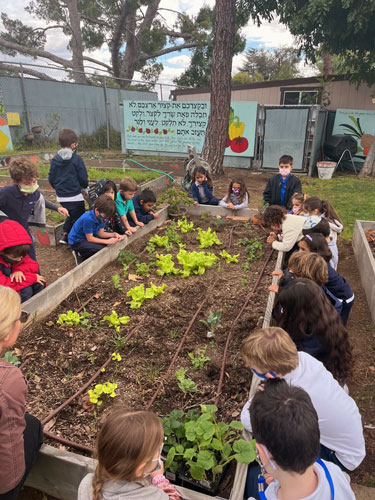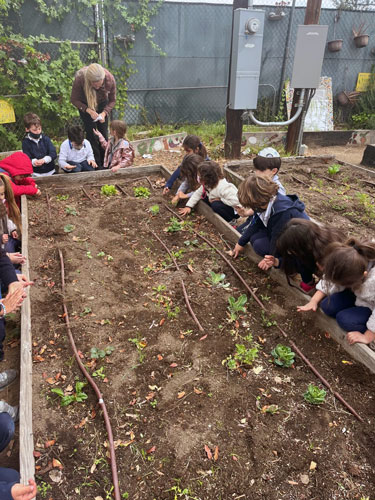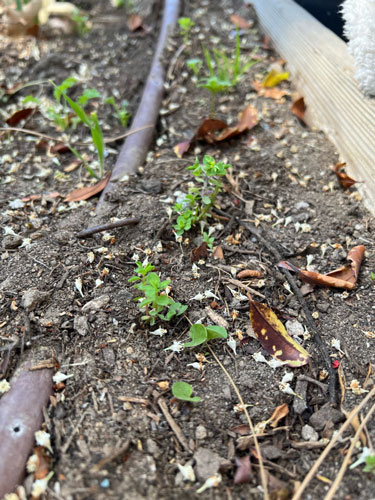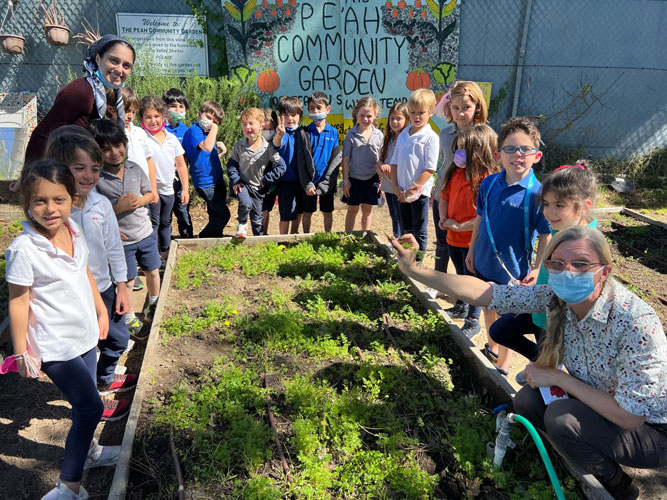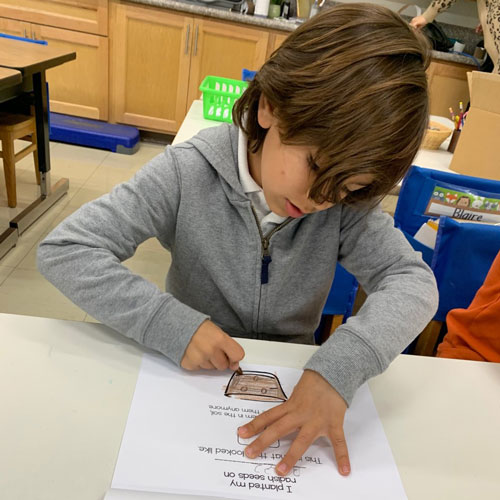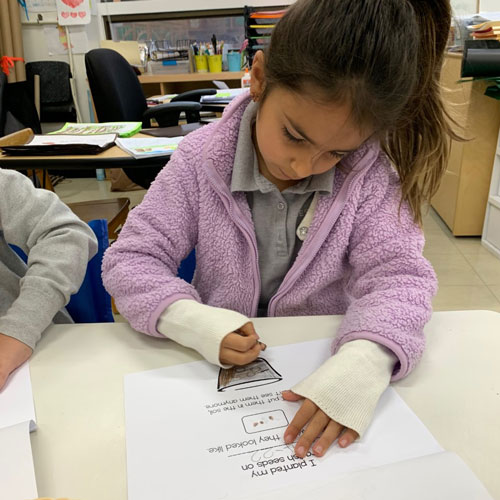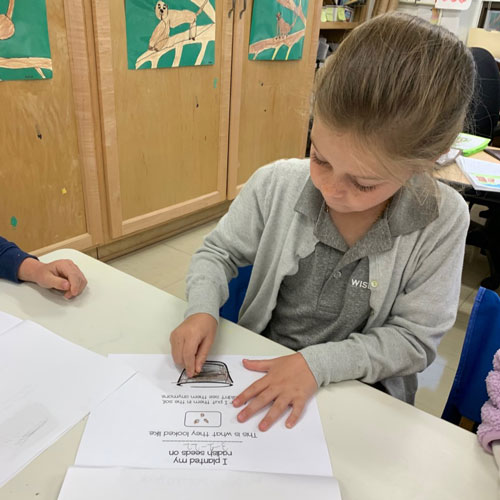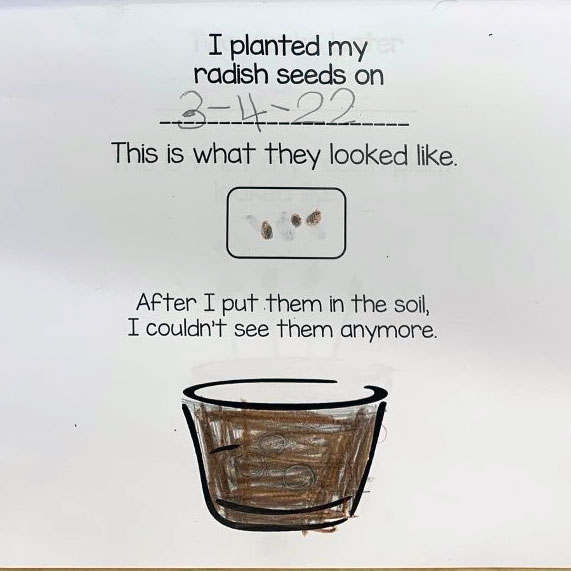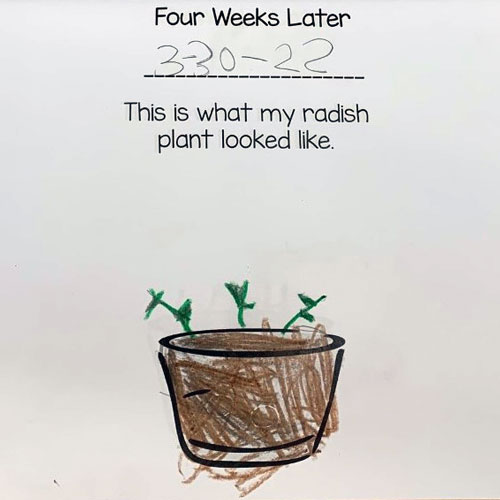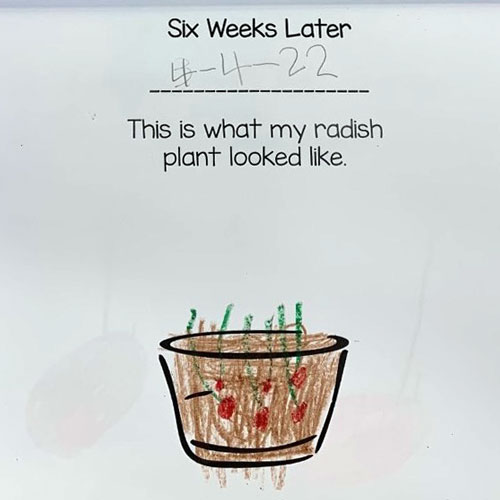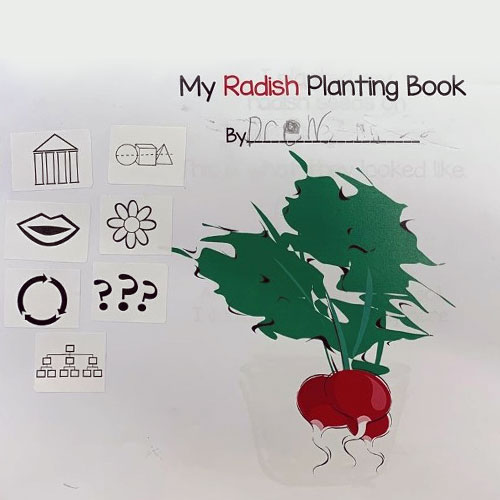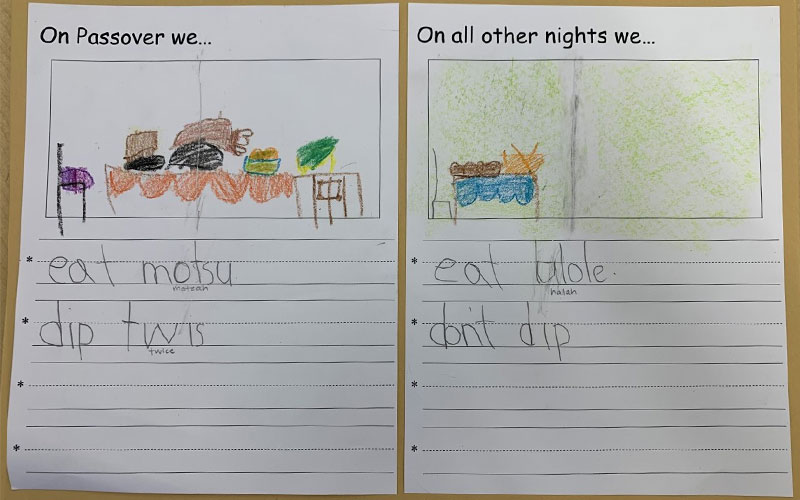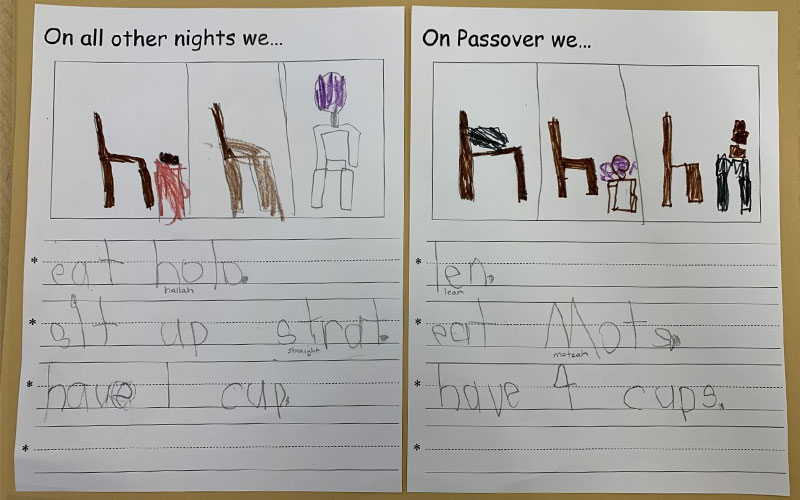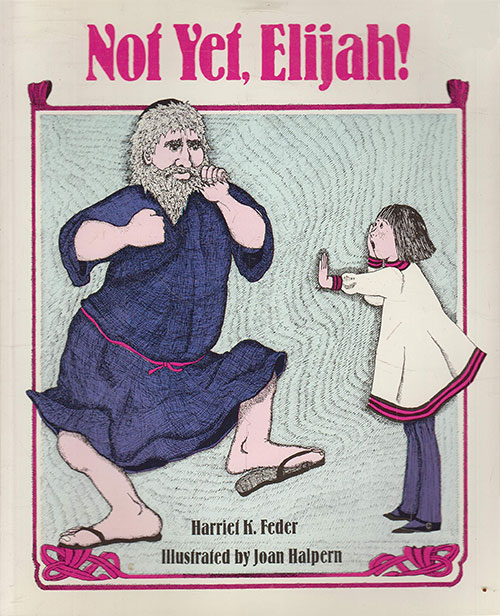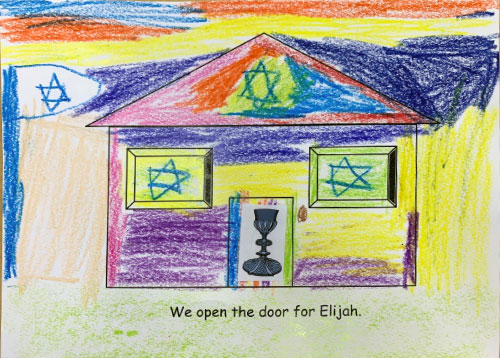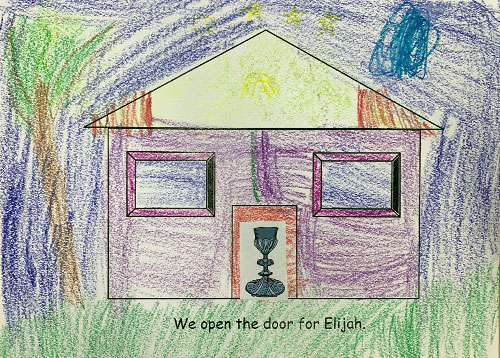Passover
KINDERGARTEN, 2022

Structure is present in many forms.
Structures serve a purpose.
Structures can be natural or man-made.
Overview:
Students describe the structure of a plant and its life cycle.
Students learn about the structure of a seder, and participate in one in class.

Structure is present in many forms.
Structures serve a purpose.
Structures can be natural or man-made.
Overview:
Students describe the structure of a plant and its life cycle.
Students learn about the structure of a seder, and participate in one in class.
Lesson: Lifecycle of a Radish
Radish is one of the vegetables placed on the Seder plate. It represents the bitterness of slavery and the difficult things in life. Through a series of educational videos and hands-on experiences, students learn about the lifecycle of a radish.
INTEGRATION: SCIENCE, READING, WRITING, VISUAL ART
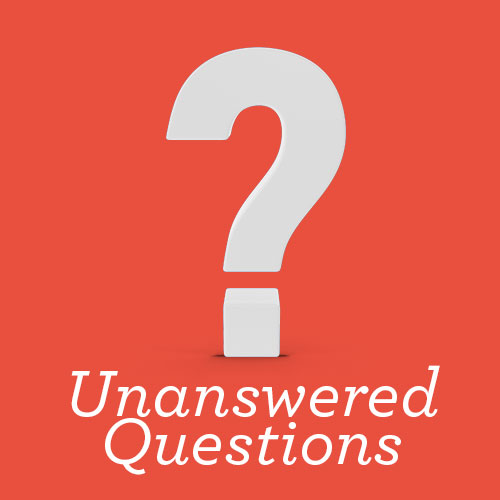
- What are the different parts of plants?
- What do plants need to grow?
- What is an irrigation system?

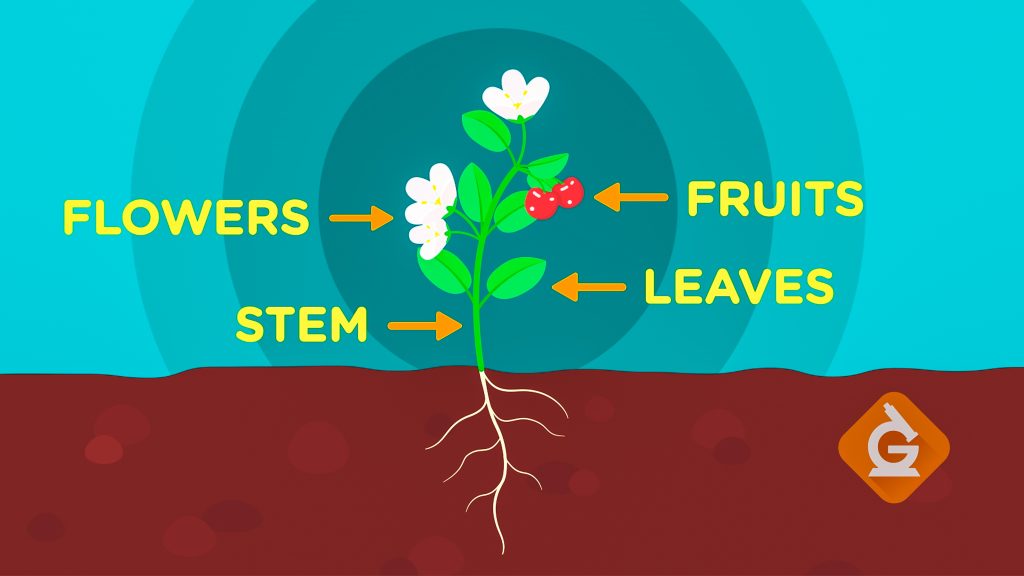
Various videos help students find answers to their questions.

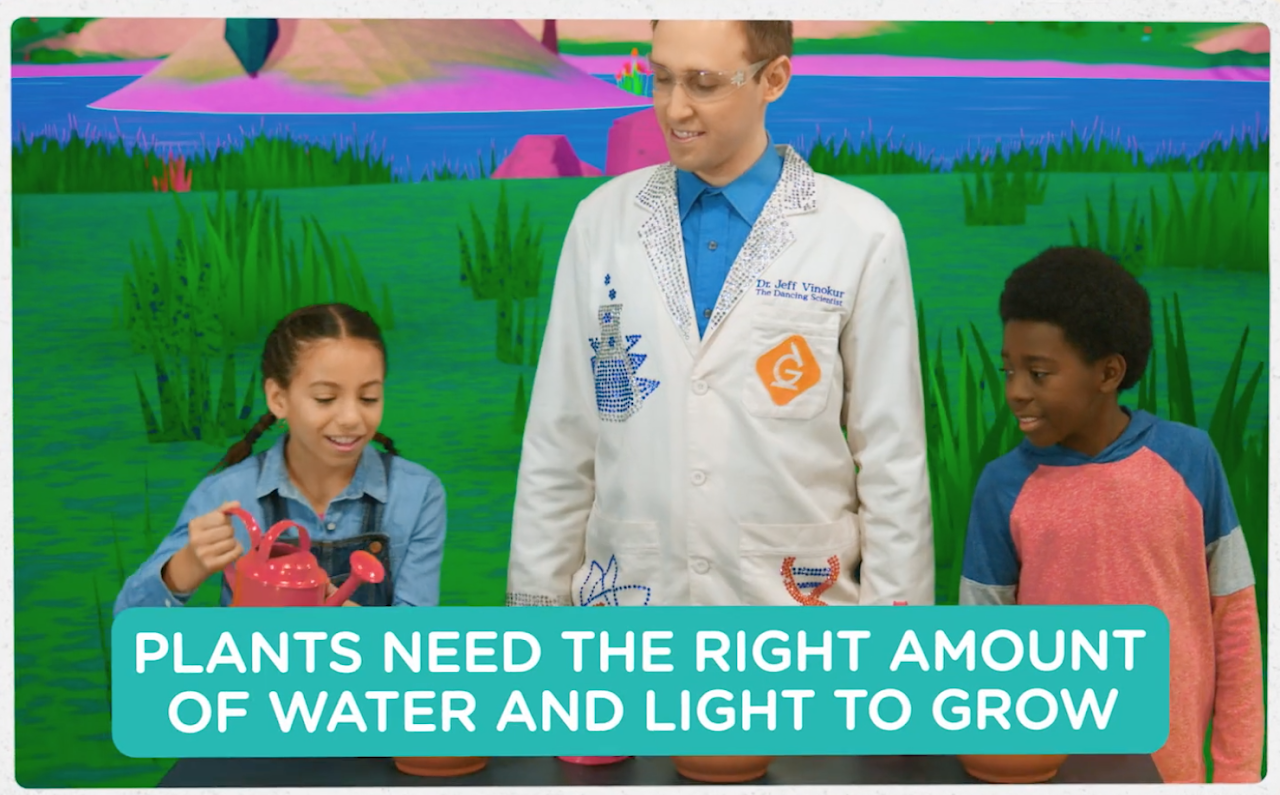
Plants grow and change over time, depending on soil, water, and light.
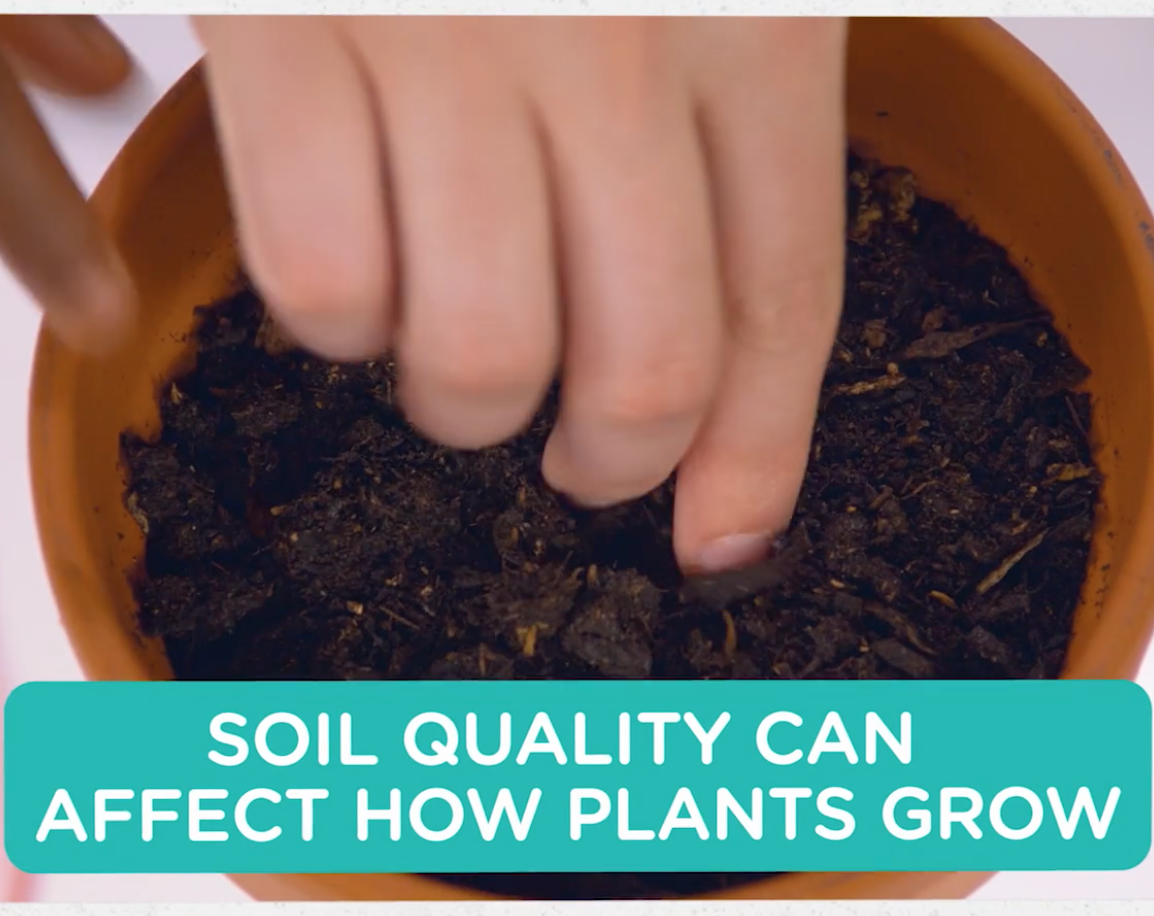

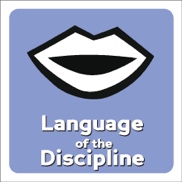
Lesson: Structure and Order of the Seder + The Four Questions
Students learn the details of the Passover story and connect to the language of the discipline.
Teacher leads a discussion of the traditions and symbols of the holiday.
INTEGRATION: READING, JUDAIC STUDIES
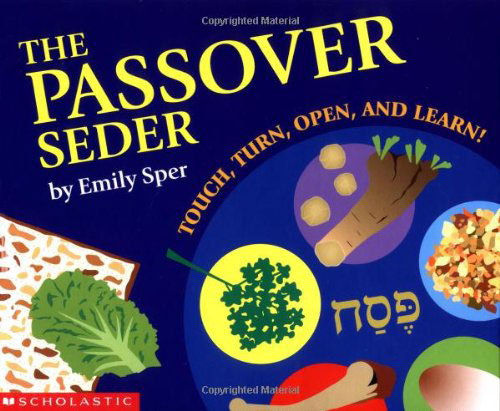

- Using illustrations from the book, students are introduced to the story of Passover.
- They learn the Passover Seder has structure and sequence.
- Students know the Haggadah tells the Passover story and is read at the Passover Seder.

The Four Questions
- Why do we eat matzah?
- Why do we eat maror?
- Why do we dip twice?
- Why do we lean?

The Four Questions
- Why do we eat matzah?
- Why do we eat maror?
- Why do we dip twice?
- Why do we lean?
Students create a picture of the questions to use as a reminder.
Students create a picture of the questions to use as a reminder.
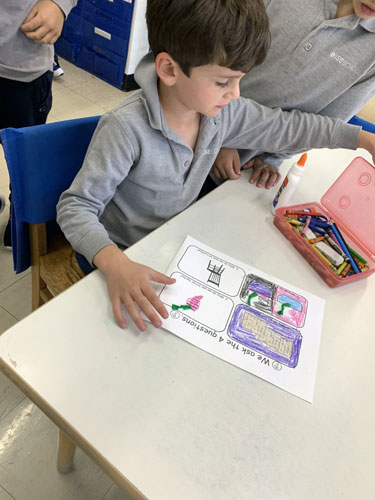
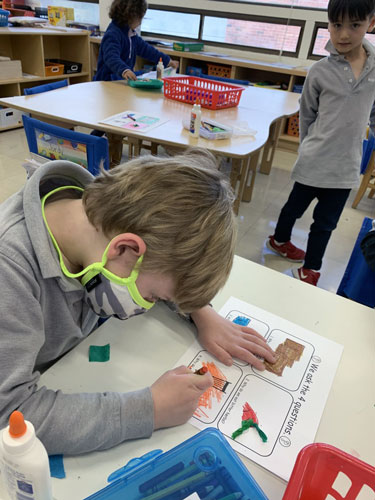

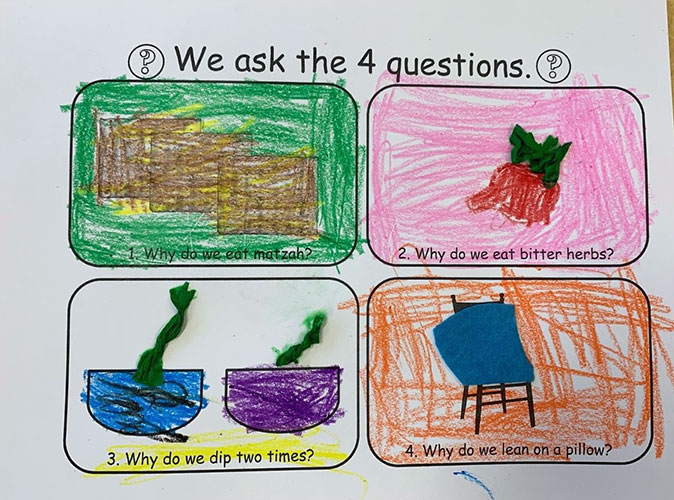
Students glue on the pillow for the chair.
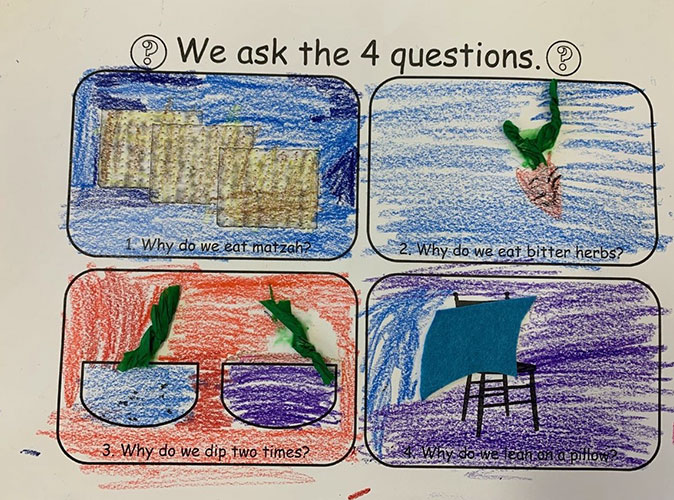
Students glue on the leaves of the bitter herb.

Lesson: Passover is… Language of the Discipline of Passover
INTEGRATION: JUDAIC STUDIES, READING, WRITING, VISUAL ART

PASSOVER IS…
The teacher reviews the story and symbols of Passover. Giving clues, students guess the language of the discipline connected to the holiday.
- matzah
- maror
- the seder plate
- haroset
- bitter herbs
- Pharaoh
- egg
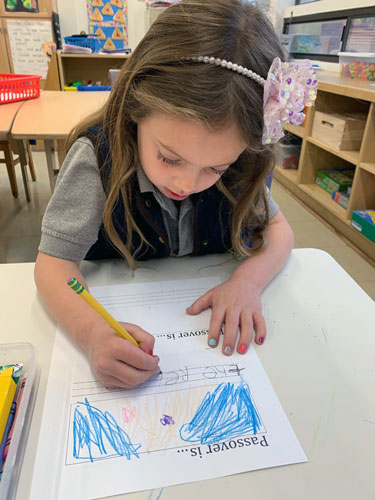

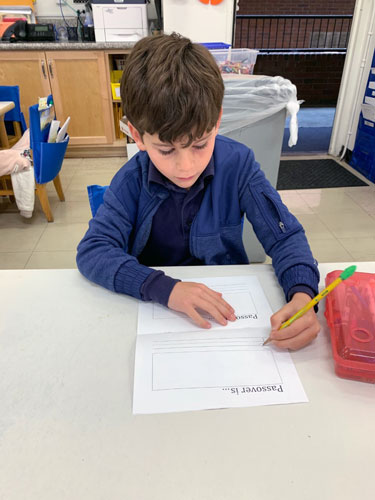
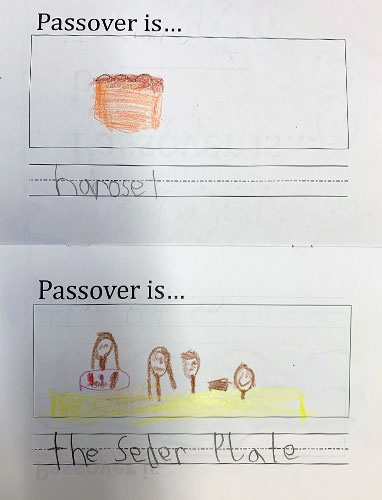

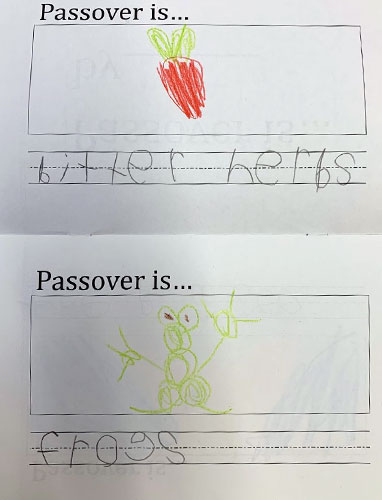
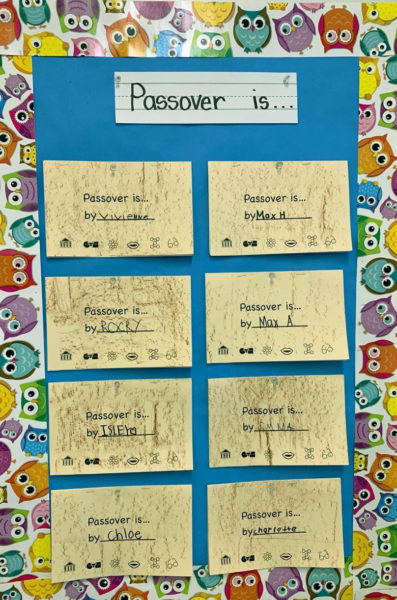

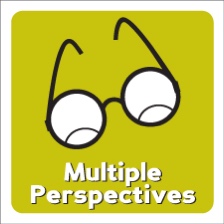
Lesson: Why We Eat Matzah
Students review the reason for eating matzah on Passover.
Teacher reads The Matzah Man.
Students compare and contrast this book and the original story of The Ginger Bread Man.
INTEGRATION: READING, JUDAIC STUDIES
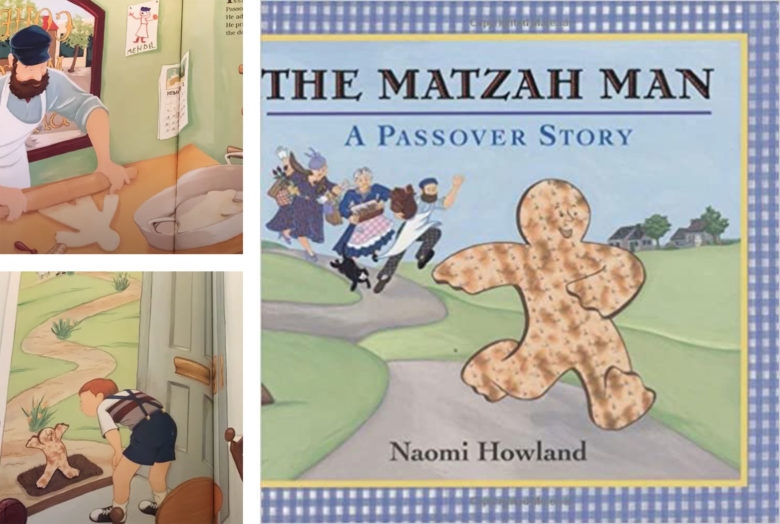
In this lively adaptation of “The Gingerbread Boy,” a bold little man made of matzah jumps out of the baker’s oven and leads him and everyone in the neighborhood—all of whom are preparing for Passover—on a merry chase.
The Gingerbread Man
The Gingerbread Man is a folktale about a gingerbread man’s escape from various pursuers
until his eventual demise between the jaws of a fox.



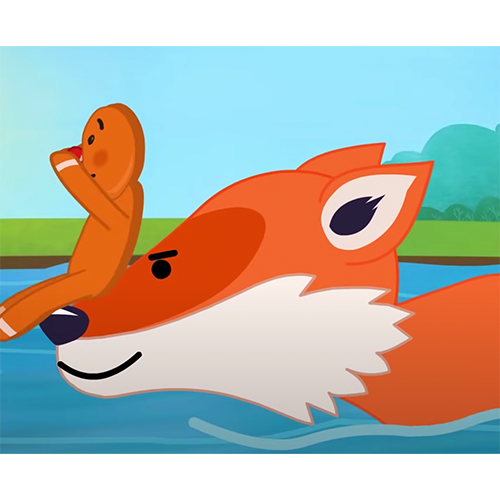
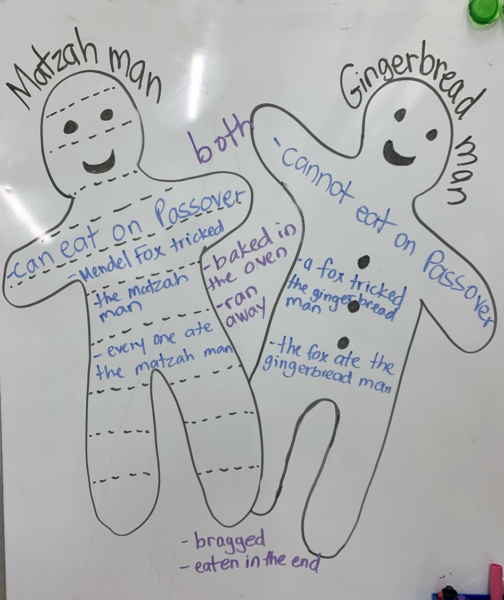
Student Responses from Classroom Discussion
How are they alike?
- Both were baked in the oven.
- Both ran away.
- Both bragged about who they ran away from.
- Both were eaten in the end.
- Both have fox in their name.
How are they different?
- The gingerbread man is not kosher for Passover.
- The fox tricked the gingerbread man.
- Mendel Fox, a boy, tricked the matzah man.
- The fox ate the gingerbread man after pretending to help him escape.
- After pretending to help the matzah man hide, everyone ate him.
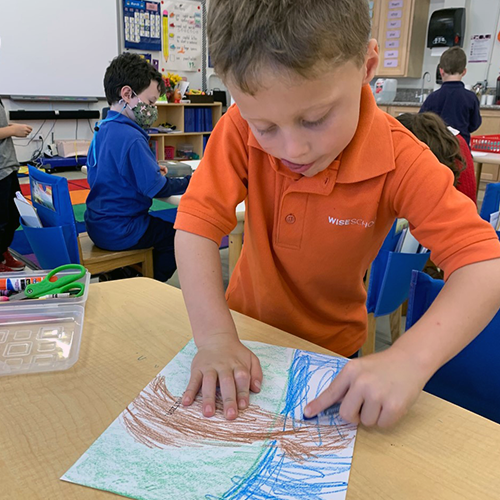
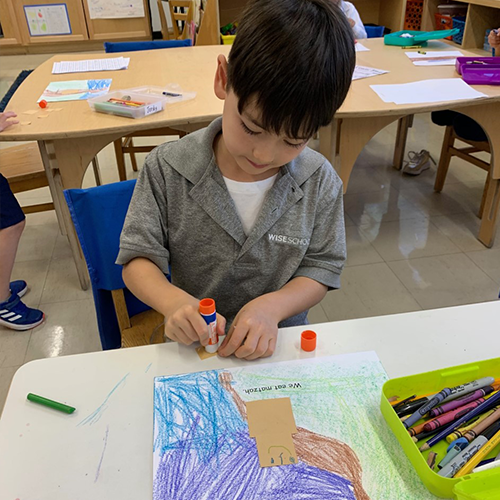

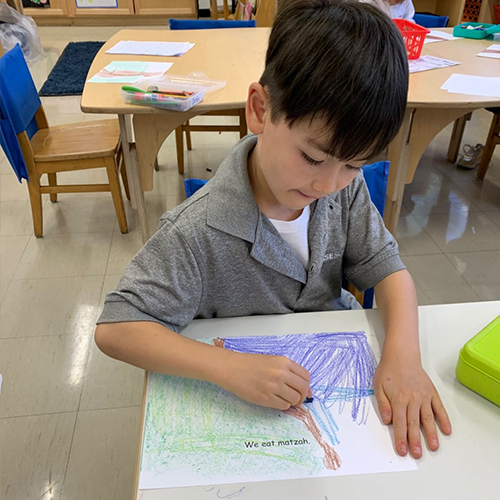
Students create a page for their Haggadah titled, “We Eat Matzah,” for their own running “Matzah Man.”

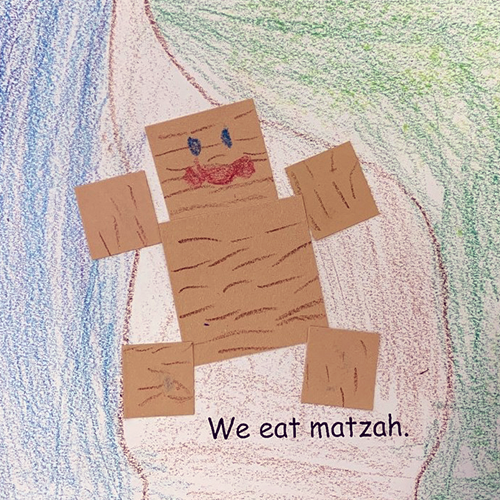


Lesson: But This Night is Different
Students write about the differences between Passover and other nights.
INTEGRATION: READING, WRITING, JUDAIC STUDIES



Using the details from the story and picture cards, students collaborate on a class Venn Diagram to compare and contrast Passover and all other nights.
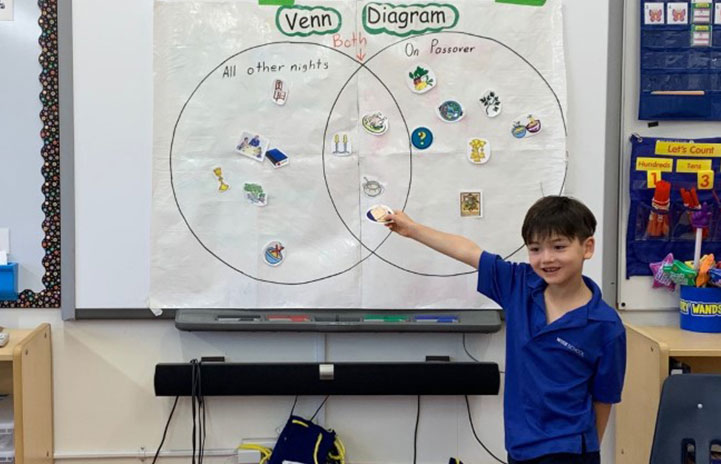
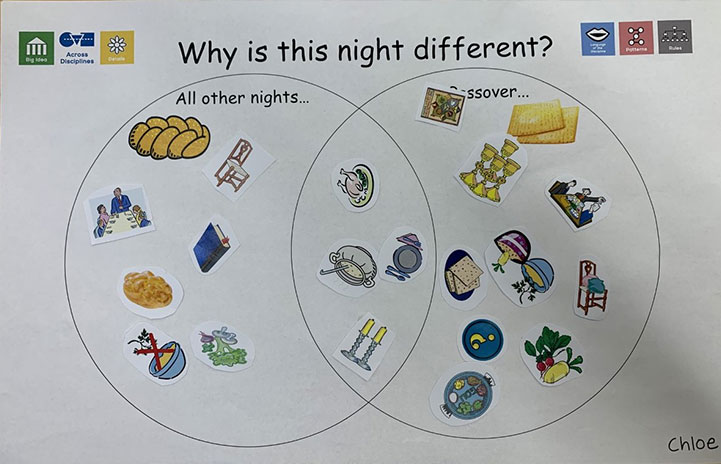
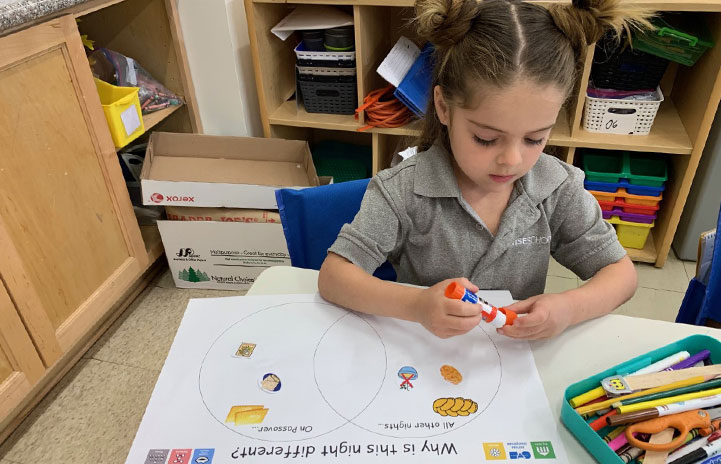
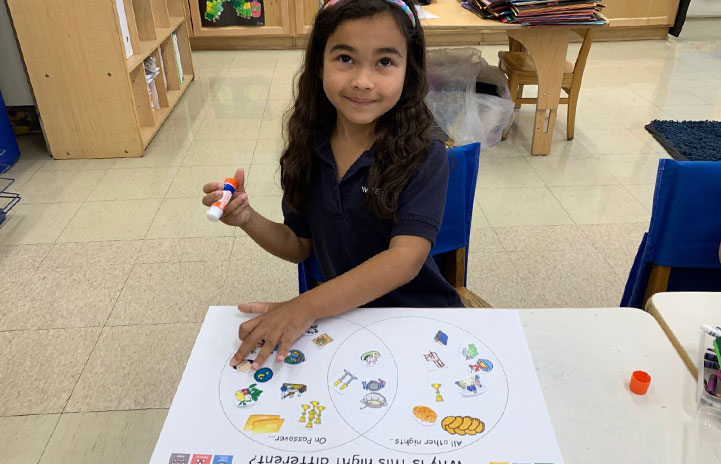
Students create their own Venn Diagram.
Students write about the differences between Passover and other nights.
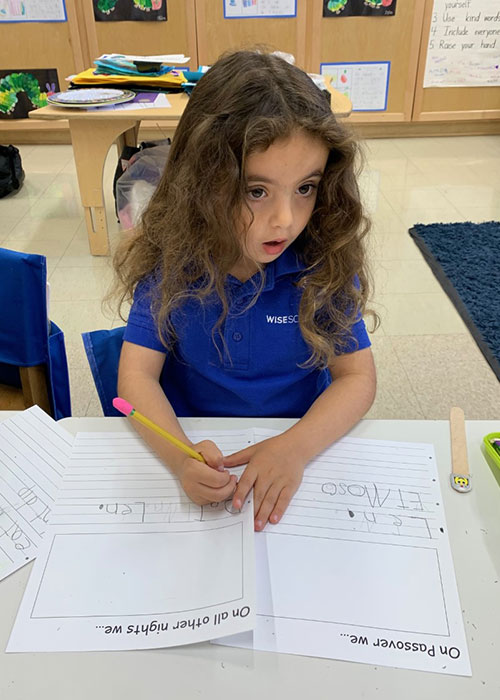


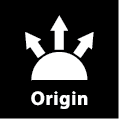
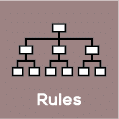

Lesson: Lesson: Elijah: Details, Symbols and Traditions
Using the information from the story, students identify the details, traditions, symbols, and language of the discipline connected to the Passover Seder. Students then design their Haggadah page, gluing on Elijah’s cup.
